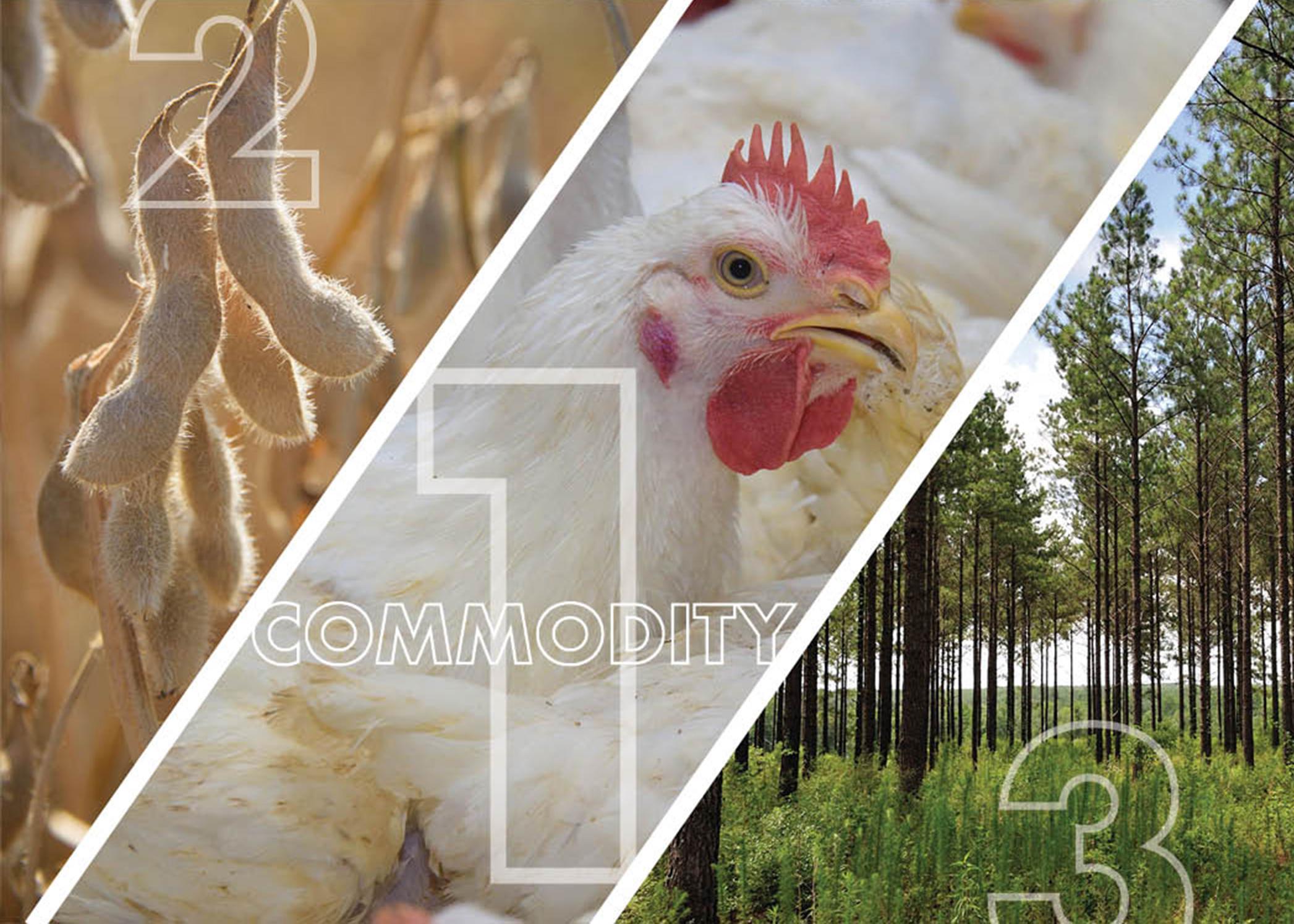Mississippi agriculture posts second highest dollar value
STARKVILLE, Miss. -- Mississippi agriculture’s value of production fell 10.3% in 2023, but still posted its second highest result on record at $8.8 billion.
Though the value of poultry production fell more than 22% from nearly $4 billion in 2022, the agricultural commodity still dwarfs all others in the state with an estimated value of $3.1 billion this year. The state’s forestry industry took its usual place as the state’s third most valuable agricultural product at $1.5 billion, an increase of nearly 10% from $1.4 billion in 2022.
Soybeans was the most produced of many Mississippi-grown row crops, holding steady in second place. At $1.6 billion, its production value decreased 9.4% from last year’s $1.72 billion.
Outside of row crops, catfish production was worth $251.2 million this year, which is down nearly 10% from $278 million in 2022. Livestock netted a total value of $509 million, which is an increase of nearly 16 percent.
During the 2020s, corn and cotton have competed annually for the state’s second most valuable row crop. Corn won a close battle in 2022 but grew its lead significantly this year. Its production was worth $675.4 million compared to $643.3 million last year.
Cotton saw a significant reduction both in planted acreage and estimated value. In 2023, the value was $397.3 million, a 35% dip from $615 million in 2022.
“The reduction in soybean values is mainly driven by lower prices, and cotton is a combination of lower prices and reduced acreage,” said Will Maples, a row crop economist with the Mississippi State University Extension Service. “Corn saw a 5% increase due to higher acreage, which helped offset lower corn prices.”
Mississippi soybean growers harvested 2.15 million acres of soybeans this year despite almost the entire state being in various levels of drought. More than 122 million bushels were produced at an estimated 57 bushels per acre.
MSU Extension soybean specialist Trent Irby summed up the year as one of what might have been. Despite favorable setups for both early and later plantings, drought conditions settled in during key growth stages of the crop over the summer, causing some acres to be abandoned.
“Even in a dry year, we are currently estimated to average 57 bushels an acre. That would be a new high, so if we pass our previous record during a drought, we could’ve shattered it otherwise and possibly hit a state average above 60.” Irby said. “It’s easy to say your harvest quality depended on where you stood, especially when we have a couple million acres, but it’s true now more than it has been at any other time in my career.”
The worst of the loss, Irby said, was south of Miss. Highway 16, which runs west to east across the state between Issaquena and Kemper counties. The drought impact on soybeans was the most severe in south and central Mississippi.
“Both early and later plantings were mostly completed at good times, but the crop was half of what it should’ve been in the southern half of the state because of the drought and because later planted beans didn’t produce,” he said. “Irrigation capability in fields there is limited.”
Corn was largely unaffected by the dry conditions, as producers harvested about 770,000 acres in Mississippi and yielded around 182 bushels per acre and more than 140 million total bushels. MSU Extension grain crops specialist Erick Larson said most of the crop had nearly matured before the extended dry spell.
“The most detrimental issue for our corn this year was not the drought, but the mid-June hailstorms that damaged plants across the Mississippi Delta and Noxubee County after corn plants were fully developed,” Larson said. “The leaf defoliation and impact damage on young ears produced significant yield loss. Fortunately, most of the damage was rather isolated, but that will mean little to growers who lost most of their crop in a storm.”
The overall statewide corn crop was up 5% despite the weather event, but cotton production values fell more than 35%, partially because growers did not plant it as much. About 520,000 acres of cotton were harvested in Mississippi last year, compared to 395,000 in 2023.
“Most of the cotton looked great pre-drought, but there were exceptions in south Mississippi where the drought was severe by mid-July,” said Brian Pieralisi, MSU Extension cotton specialist. “Conversely, the Black Prairie region was unusually wet for two weeks during mid- to peak bloom. Both events caused yield reductions.”
Pieralisi said dryland cotton in south Mississippi was almost zero yield in some cases and caused yields to be 100-200 pounds lighter per acre. The north Delta and northern central regions had strong yields in many cases, but that was the exception to the rule.
“The advantage to growing cotton is that it has an ability to compensate for hard times, whatever that may be due to its indeterminate nature,” he said. “This year it happened to start off well and simply turn too dry late in the season, which is rare because cotton typically doesn’t demand much water late. Obviously, the profile was just too dry going into September in many locations.”
Of the state’s other row crops, peanuts had the highest percentage increase in production value at 18% but only 18,000 acres were harvested. The value of rice production also spiked 29% over 2022. Its 2023 estimated total value is $134.6 million with 118,000 acres harvested.
The production value of specialty crops rose slightly to nearly $113 million this year. Hay’s total was nearly $180 million, up nearly 21% from 2022. Wheat production also saw a small increase in worth at just over $36 million. Sweet potato production value was flat from 2022 at just over $91.5 million.
Each year, growers in each state receive a variety of government payments through various ag safety net programs. This year, they received around $256.6 million.











